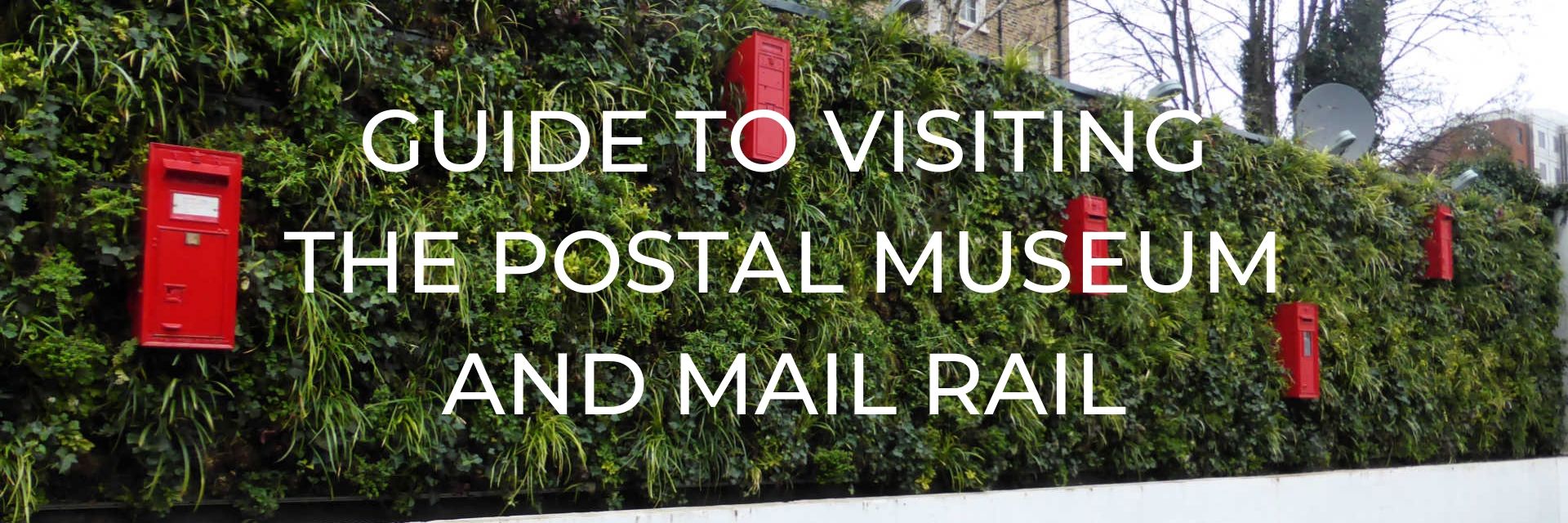
Most visitors to London will travel on the tube, whether the larger sub-surface lines or the more cramped deep-level lines that give the system its tube nickname. But did you know there is an even smaller underground railway in London? One that was used purely for moving the mail. Mail Rail, as it was known, is no longer used by the Royal Mail but is now open as a tourist attraction as part of the Postal Museum.
Want to save this for later? Click the Pinterest button on the left for a pinnable image!
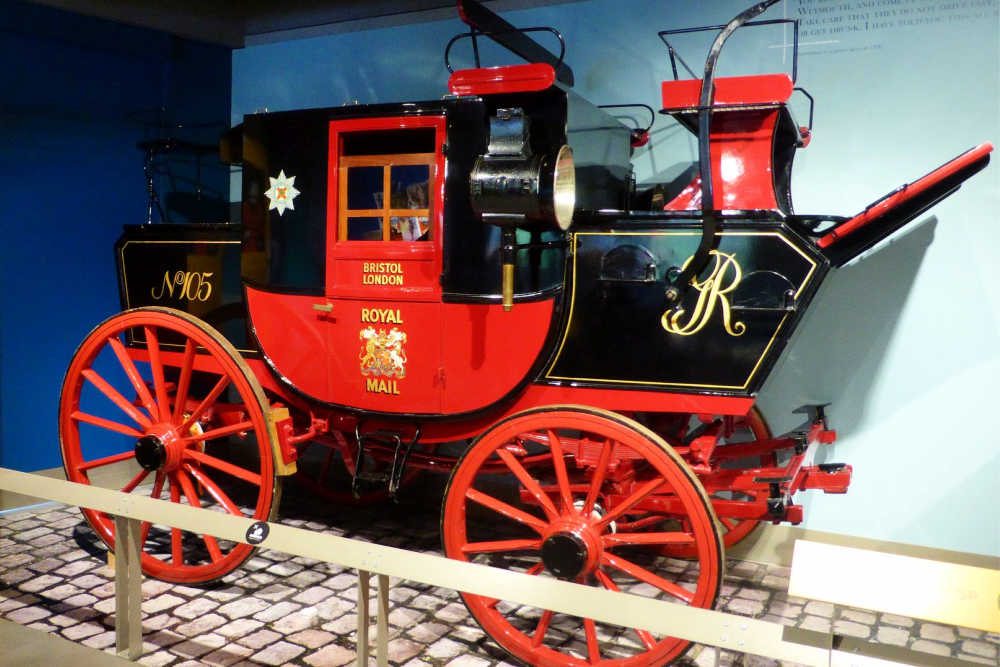
The idea to build a railway under London to move the mail originated in 1911 and was designed as a 6.5 mile route linking key sorting offices. Originally called the Post Office Railway, the line opened in 1927 to move mail between London sorting offices efficiently by avoiding delays due to London road traffic.
The narrow-gauge railway moved mail between eight stations, each located at a sorting office. However, as sorting offices were relocated, the line became less used and eventually only served three stations. The largest station under Mount Pleasant sorting office is now where you can explore this previously hidden railway.
HIGHLIGHTS OF THE POSTAL MUSEUM AND MAIL RAIL
The postal museum and Mail Rail are not co-located, so it’s important to know where you are heading in order to take your ride on the train, especially as these tickets are timed.
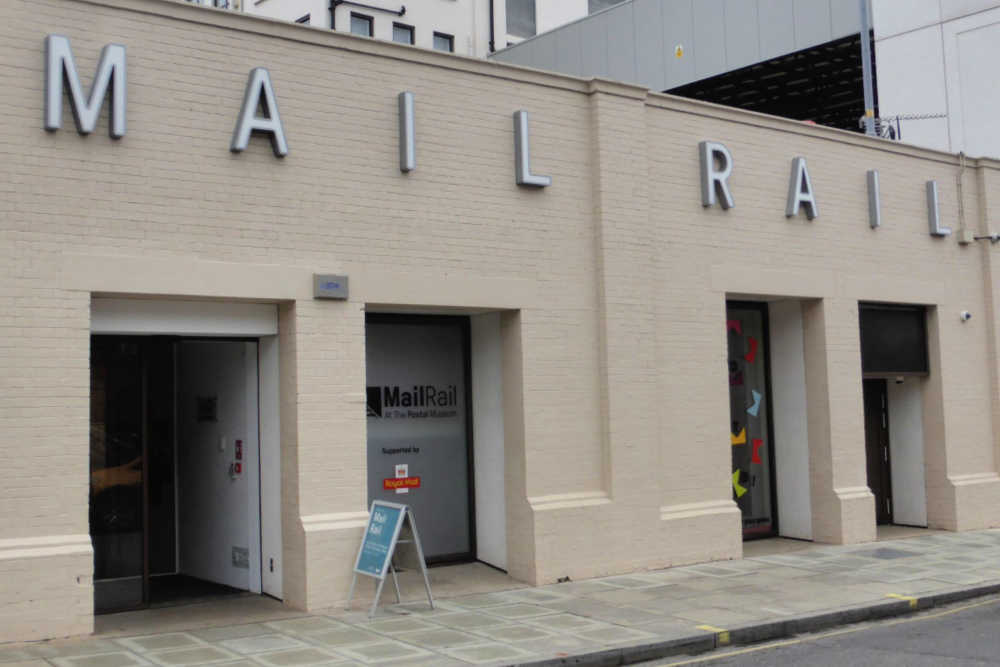
MAIL RAIL
The ride on the mail rail is located just a short walk down Phoenix Place from the Postal Museum itself. You do not catch the train from within the actual postal museum. The building has a large MAIL RAIL sign outside and is easy to find.
Once your tickets have been validated you will descend some stairs to the train platforms and wait for your train time. You will then be seated in the very compact railway carriages which have been converted to carry people from their original use as just for mail. The trains are also now driven by a human; when carrying the mail they were driverless.
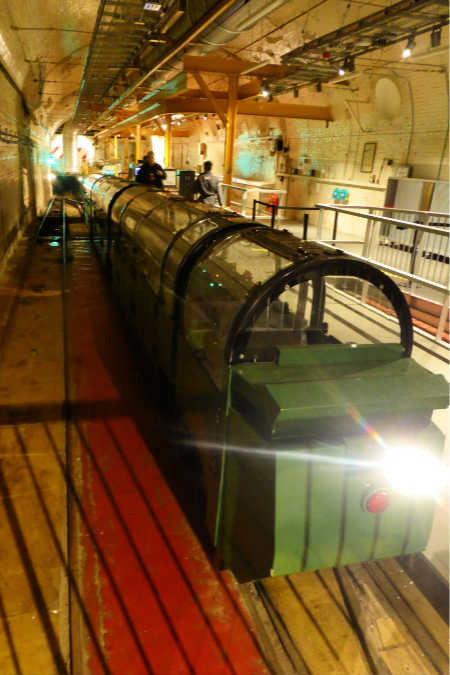
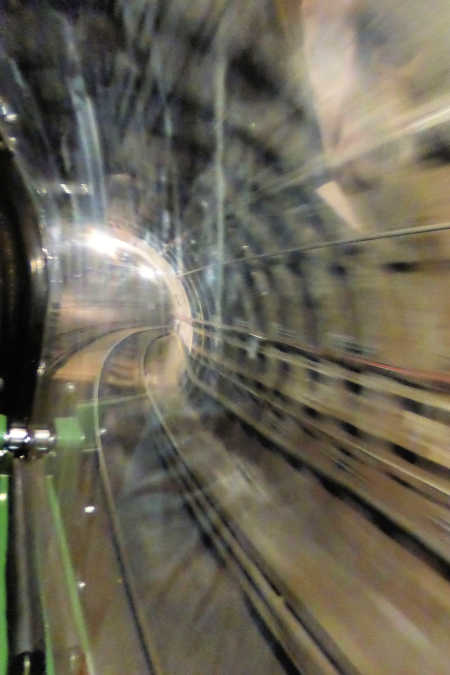
As the tiny train departs the station and heads into the tunnel, you’ll be given a narrated history and guide to the railway. You’ll see the tiny tunnels, branches off those tunnels into other routes the railway used to serve and even a train graveyard where trains no longer needed have been left. The best parts of the tour are at the stations where you’ll stop at a couple during the tour and projectors beam videos onto the platform walls telling the story of how the railway worked. That parts of the video cleverly align with platform features like doors so that people appear to walk out of them is a very nice touch.
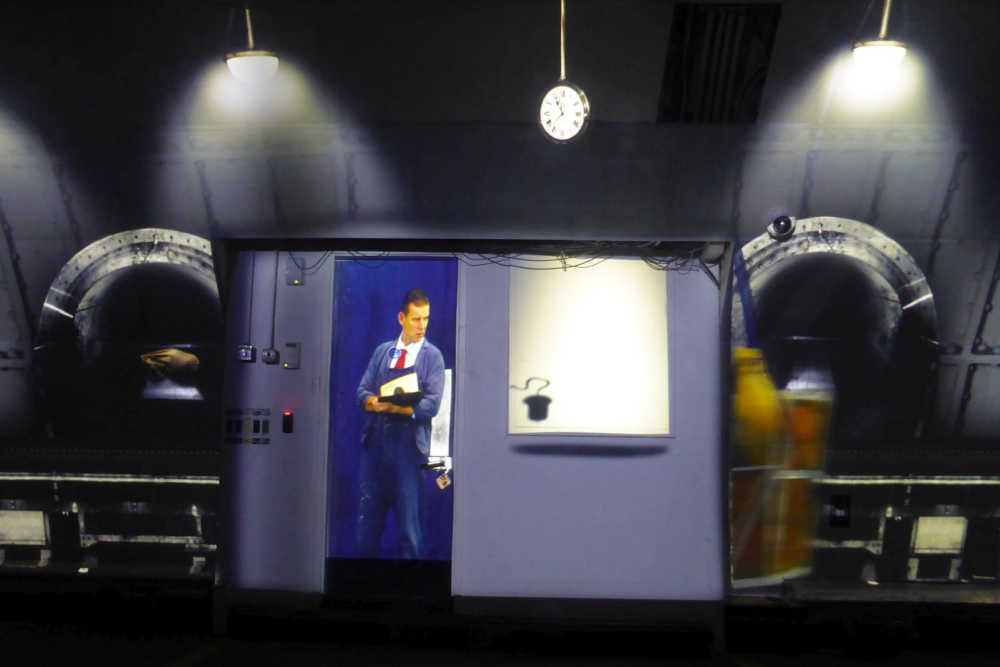
At the end of the ride, you’ll exit the train through a small exhibition which shows some of the equipment used on the railway. There is also a mail sorting interactive challenge here where you have to sort the mail in the correct slots while the train is hurtling along. The whole section of this part of the exhibit moves back and forth as you try to sort the mail to simulate the challenges the workers would have faced.
THE POSTAL MUSEUM
The Postal Museum, with its entrance hedge embedded with postboxes (as shown in the header image), shows the history of the Royal Mail and the postal service within the UK. From the origins of the service and famous introduction of stamps, such as the Penny Black, to the equipment that has allowed letters and parcels to be distributed country-wide for over 500 years.
The museum houses examples of royal mail vehicles, including a very impressively restored mail coach, as well as many examples of postboxes and telephone boxes.
Why telephone boxes? Well for many years the GPO (General Post Office) delivered the post and provided telephone services within most of the UK. The museum also has the honour of being the home of the only Victoria Cross awarded to a member of the Post Office Rifles.
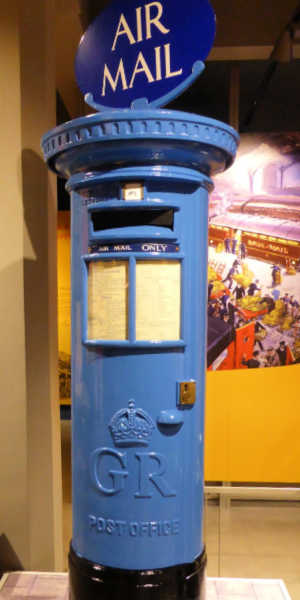
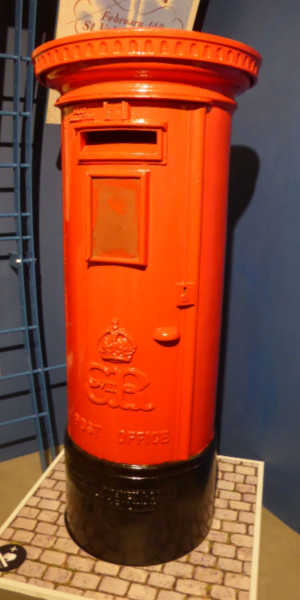
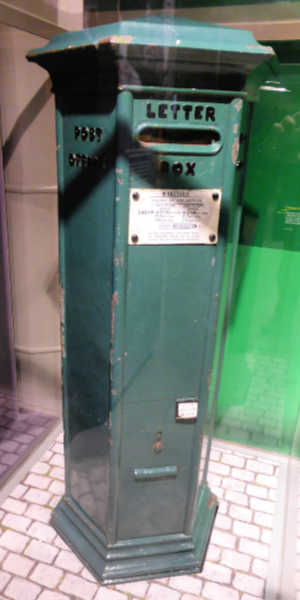
PLAN YOUR VISIT TO THE POSTAL MUSEUM AND MAIL RAIL
HOW TO GET THERE
The Postal Museum and Mail Rail can be found at 15-20 Phoenix Pl, London WC1X 0DL.
The nearest tube stations are Chancery Lane (Circle Line), Russell Square (Piccadilly Line), King’s Cross St Pancras (Circle, Hammersmith & City, Metropolitan, Northern, Piccadilly and Victoria Lines), and Farringdon (Thameslink, Circle, Hammersmith & City, and Metropolitan lines). All stations are about a 10-15 minute walk to the Postal Museum.
Parking is available less than ten minutes walk away at NCP Car Park London Saffron Hill.
OPENING HOURS
Opening hours are 1000-1700 every day except for the 24th to 25th December.
The Mail Rail ride runs from 1015 to 1635 and takes approximately 15 minutes. We recommend booking in advance as Mail Rail tickets are timed for a specific hour of the day. They can be purchased on the day, but you could have to wait to ride depending on demand.
As the entire exhibition is indoors, aside from the brief walk between the two parts of the attraction, any time of year is a good time to visit and it could be the perfect place to visit on a rainy or cold day.
HOW TO BUY TICKETS & SAVE MONEY ON ADMISSION
Basic admission prices are £17 for adults, £10 for children 3-15 years, £12 for people aged 16-24. Prices are £2 less for disabled people and you can save £1 per ticket by booking in advance, which also guarantees your Mail Ride time.
The Postal Museum is included in the London Pass which can offer savings depending on what else you are doing whilst you are in London.
ACCESSIBILITY
The Postal Museum and Mail Rail exhibits offer step-free access except for the Mail Rail ride itself due to emergency evacuation requirements. A film of what riders will experience is available on the ground floor of Mail Rail.
For full accessibility details please visit the Postal Museum Accessibility page.
IS THE POSTAL MUSEUM AND MAIL RAIL WORTH THE VISIT?
We thoroughly enjoyed our visit to the Postal Museum and the ride on Mail Rail was interesting. Both to ride on this previously goods only tiny railway but also for the history of how the railway operated and helped keep the post moving across London.
See what others think of this attraction on Trip Advisor.
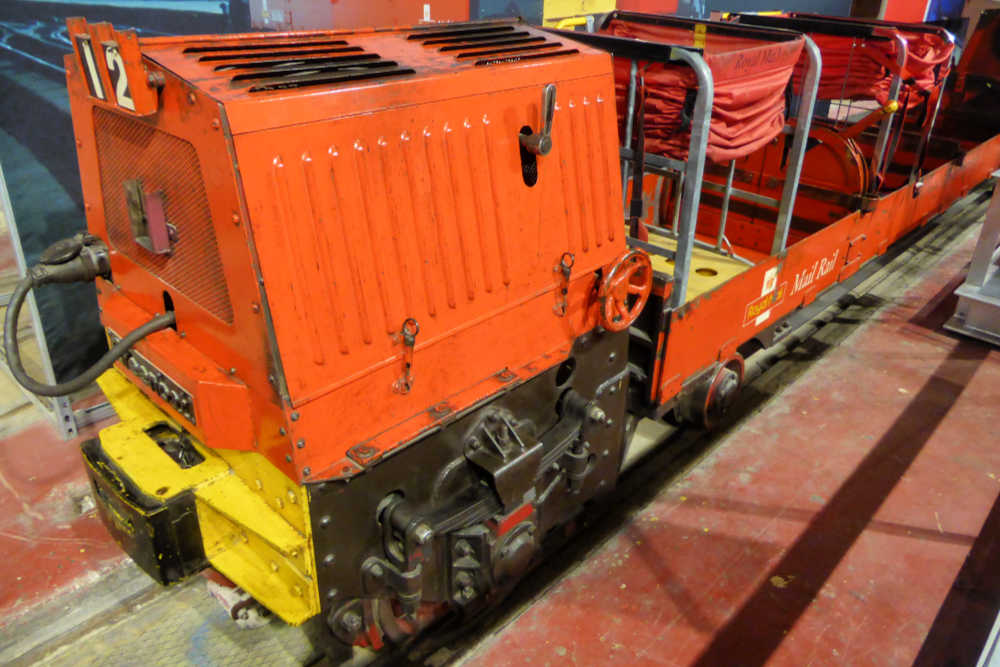
ADD TO YOUR ITINERARY
“When a man is tired of London, he is tired of life” said Samuel Johnson, so it’s no surprise that there are a plethora of things to do in the UK’s capital city. Here are a few choice selections to whet your appetite.
IN THE AREA
- Charles Dickens Museum showcases manuscripts and personal items from the famous author displayed in his former home.
- If you want to buy something silver the London Silver Vaults are the world’s largest retail area for silver in the world with over 30 specialist shops.
- The Foundling Museum tells the story of the Foundling Hospital. The UK’s first charity home for abandoned children.
- The British Museum is one of the world’s premier collections of global antiquities including such exhibits as the Rosetta Stone and the Elgin Marbles.
- Visit the famous Platform 9 and 3/4 from Harry Potter at King’s Cross Station.
RELATED ATTRACTIONS IN LONDON
- Philatelists will love the National Philatelic Collection at British Library which contains more than 8 million items stamp related items.
- Visit the London Transport Museum to find out more about the history of transport over and underground in London.
- Once the tallest tower in London, the Post Office Tower, or BT Tower to give its proper name, is a unique looking landmark on the London skyline. Unfortunately, it is no longer open to the public.
Want to save this for later? Click the Pinterest button on the left for a pinnable image!
RESOURCES | PLAN YOUR TRIP TO LONDON
To book flights, rental cars, accommodations, and activities for your trip, please check out our recommended travel providers, favourite apps and websites.
These are a few tours we would recommend for your trip to London.
Some of the links in the post above are affiliate links. This means if you click on the link and purchase the item, we will receive an affiliate commission but this does not affect the price to you. Please read our full disclosure policy here.





